#vienna 1815
Explore tagged Tumblr posts
Text
An anecdote about the Duc de Reichstadt
Though I believe at the time he was still regarded a "Prince de Parme". This comes from Foresti, one of little Napoléon-François' Austrian instructors.
A few weeks ago, while he was being read to, he heard the word ‘clumsy’. ‘That's what my dear papa used to call me when he came to see me, and after that he often fell asleep in an armchair.’
"Clumsy" by the way also agrees with Foresti's own first impression that the prince was a bit behind other kids of the same age in his physical development (Eugène had already something in that vein to Auguste some time earlier).
The documents coming from the Austrian governors can be found here.
5 notes
·
View notes
Text
Some additions from "Die Geheimpolizei auf dem Wiener Kongress", page 307f:
22 December - (*-*)
Yesterday, as every Wednesday, there was a soiree at Sidney Smith's after the theatre, where twice as many people attended as the quarters, consisting of two rooms, can hold. Some of the party, according to London custom, remained in the servants' room or on the staircase. They regretted immensely the departure of Demoiselle Bigottini, who still has a lawsuit with Joel about 1000 ducats for tailor's fees. They dwelt endlessly on the fact that all the theatres in Vienna are in such a very bad state at present. They speak of the fact that the Prince Regent, the Duke of York and the Prince of Orange have become Austrian field marshals, that Orange has received the Hohenlohe regiment, that the Prince of Orange will marry our Archduchess Leopoldine.
Colonel Count Latour [of the Kingdom of Würtemberg] said yesterday: "I know for certain that Lord Castlereagh is in a very great embarrassment in Vienna. He had arrived in Vienna with instructions to allow Prussia to annex Saxony and to enlarge and consolidate Hanover. However, presumably because of the opposition in Parliament, he received the diametrically opposed instruction a few weeks ago not to admit Saxony to Prussia in any way. Now Lord Castlereagh has had to destroy his first introduction at the Congress itself and establish entirely new principles, an entirely new basis. That is what is holding up the progress of the Congress."
Yesterday it was assured that everything is now settled with the Russian Emperor as regards Poland; as regards Saxony, an understanding will easily be reached with Prussia. - The envoys Bildt (Sweden), Türkheim, Gagern and Plessen complained very bitterly yesterday about the quite inadmissible exaggerated ultramontane principles and claims which Cardinal Consalvi is putting forward with regard to the German Concordat, which the Austrian Ministry seems to support, but which are of such a nature that nothing can be achieved in (ecclesiastical) matters.
All the legations of the old princely houses were extremely outspoken against Prussia. They say: ‘In 1813, Prussia had put up the banner of the German national spirit in order to gain a following; in 1814, Prussian greed shines through on all sides, etc.’. Prussia is exclusive with Russia, has concluded a secret convention with Russia, which it does not publish; Prussia is a traitor to the cause of Europe [presumably erroneously for ‘Germany’] and to the cause of the balance of Europe; against Prussia, as against Russia, the storm bell of Europe and of Germany must be rung’.
Prince Clary also has a lot to say about the true madness of the Russian Emperor, who does not allow any civilian to enter, but will open the ‘doubles battants’ to any ensign, who never dines at home in St Petersburg, never comes home before 4 o'clock in the morning. They say: The vie privée of Emperor Alexander is something quite unbelievable.
Now there's some gossip for you. The Prince Clary must be the same who has left some funny correspondence about the marriage of Marie Louise in 1810.
On this Day: Vienna Congress Edition
December 22nd, 1814
Political
N/A
Other
a Performance in the Grosser Redoutensaal and presentation of a tableau occurs. the opera was Les Grands Jours de Chateau de xx. The tableau was The Painting that Came Alive.
6 notes
·
View notes
Text
The session of plenipotentiaries that never happened,
Or The tale of how I rediscovered that one lithography of Isabey’s famous painting in extremely high resolution and went through a total recall, so that everybody could suffer (myself including) ⭐️
The arrival of the Duke of Wellington had not only affected Vienna's diplomatic activity and social calendar; it was also posing a problem to the painter Jean-Baptiste Isabey, who was trying to capture the congress on canvas. He had been working for some time, and he had finally found a way to balance all the strong personalities, many of them patrons, into one single painting, and yet not offend national sensibilities or fragile egos.
The painting, which depicted the delegates gathered in a conference room, turned out to be a compromise in the best spirit of Vienna diplomacy.
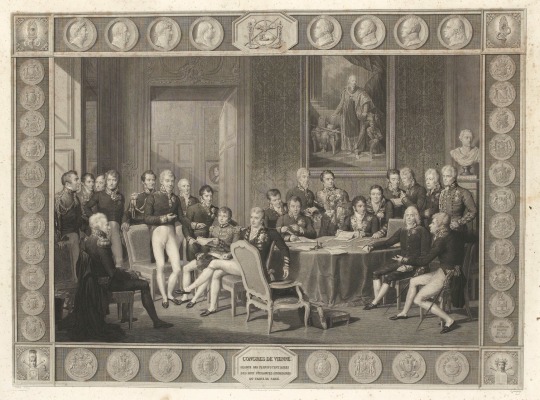
Metternich, the president of the Congress, draws the eye, as the only standing figure in the foreground.

Castlereagh, though, commands the center, sitting with his legs gracefully crossed and elbow resting on the table.
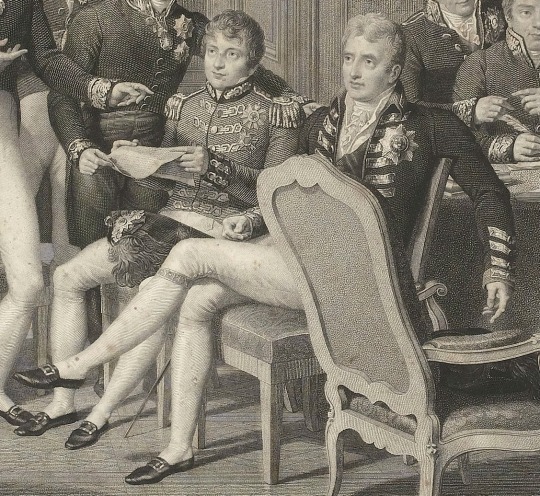
The light shining through the window, however, falls onto Talleyrand, sitting across the table with his dress sword at his side. An empty chair on both his right and left make him further stand out, as do the nearby figures who look to him, just as many of the smaller powers had sought his leadership the last few months.
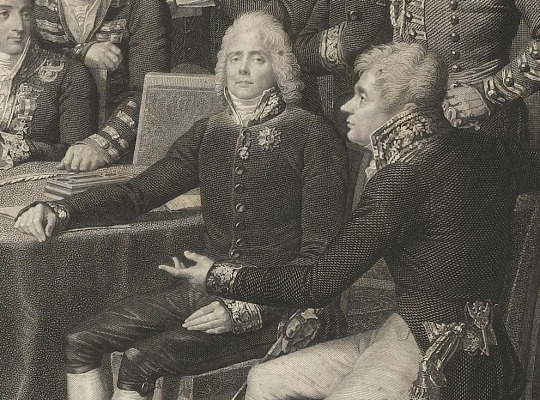
As Isabey was putting the finishing touches to his composition, he had to figure out what to do about the fact that the Duke of Wellington was now also in town. Starting over was out of the question. Omitting a man of his stature was equally impossible. Yet it was not easy to incorporate him into a canvas on which all the best places had already been taken. The painter's solution was simple and elegant: why not make the painting commemorate the Duke of Wellington's arrival in Vienna?
That way, the duke could simply be inserted on the far left side of the painting, without any insult to his position. As for the duke's reluctance to be painted from a side angle (he was self-conscious about his nose), Isabey had overcome that with a well-targeted compliment: didn't Wellington look like the handsome and chivalric Henry IV? Pleased with this comparison, Wellington accepted, joking that Isabey was a "good enough diplomat to take part in the Congress".

The painter also had to apply his finesse to convince Humboldt to enter the studio. The Prussian ambassador hated to have his portrait made, and, sure enough, he first declined, claiming that he had "too ugly a face ever to spend a penny" on a portrait. With this statement, Isabey saw his opportunity and emphasized that he would not "ask the slightest recompense for the pleasant trouble I am going to take". Isabey only wanted "the favor of a few sittings".
"Oh, is that all?" Humboldt quickly came around when he realized it would not cost him anything. "You can have as many sittings as you like".
Later, many congratulated Isabey on his portrait, particularly the fine job with Humboldt. The Prussian did not pay anything, as agreed, and Isabey got his revenge, Humboldt joked, by painting "an excellent likeness of me".
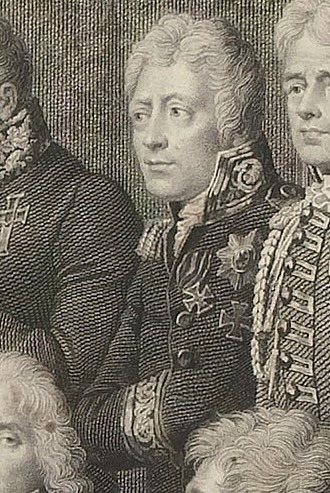
Few could complain of the treatment received from Isabey's flattering brush. This famous painting of the Congress of Vienna was pleasing to all, though typical of this peace conference, the scene was purely imaginary. The group of twenty-three delegates had never met in exactly this way before. Isabey had painted the portraits of each figure individually, and then later assembled the whole group together.
And so, symbolically, this simulated image would commemorate a congress that never was.
After that spectacular depiction of historical context surrounding Isabey’s magnificent canvas by David King few things are left to be added. I would simply love to highlight some other figures of utmost importance for the diplomatic life of that illustrious historical period - there are
Karl August von Hardenberg, Prime Minister of Prussia at the time;
Herren Wacken and Friedrich von Gentz, two Secretaries who were responsible for the protocols of the most important Congress' meetings;
count Karl Vasilyevich Nesselrode, a Russian-German diplomat, who became state chancellor of the Russian Empire in 1816;
prince Andrey (Andrew) Kirillovich Razumovsky, an extremely wealthy Russian aristocrat and diplomat, for whom Vienna was like his second home;
and we shouldn’t (or rather can’t) forget about general Charles Stewart-Vane, Castlereagh’s younger brother who definitely knew how to throw an unforgettable party, so refined aristocratic society could discuss his wild adventures at their fashionable salon meetings day and night. ✨
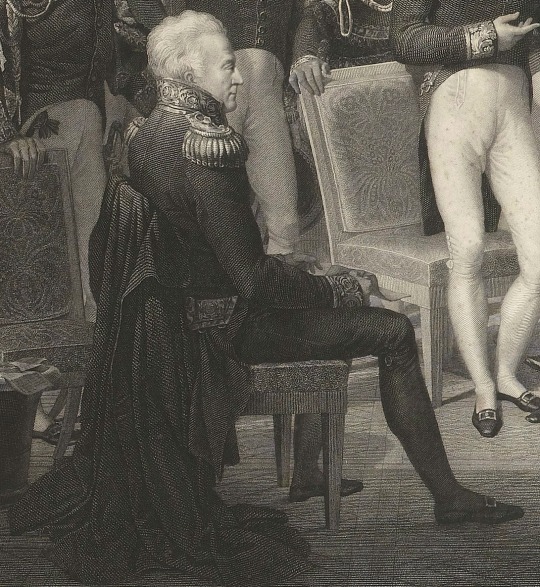
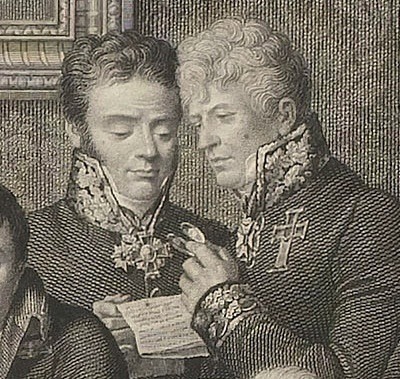
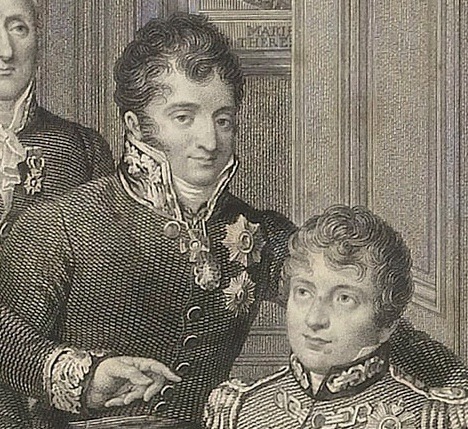
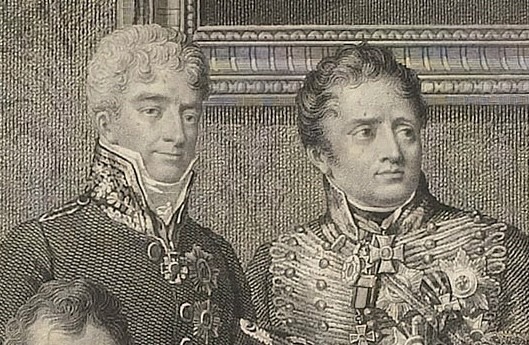
P.S.
Perhaps, there should be more posts with other details of the lithograph as well as Isabey’s original canvas, I’ll just need some time and motivation for that. 👌
#I bet some people know perfectly well what was playing in the background during the arrangement of this post 🤫#the congress of vienna#klemens von metternich#metternich#robert stewart#lord castlereagh#charles-maurice de talleyrand-périgord#talleyrand#wilhelm von humboldt#humboldt#hardenberg#friedrich von gentz#nesselrode#prince razumovsky#charles stewart-vane#napoleonic era#napoleonic wars#19th century#1814#1815
55 notes
·
View notes
Photo

Europe after the Congress of Vienna, 1815.
by @LegendesCarto
64 notes
·
View notes
Text
Time Travel Question : 19th Century IV and Earlier
These Questions are the result of suggestions from the previous iteration.
This category may include suggestions made too late to fall into the correct grouping.
Please add new suggestions below if you have them for future consideration.
#Time Travel#19th Century Paris#coca wine#absinthe#expressionists#19th Century#Pre-Raphaelites#Art History#Vienna#Statue of Liberty#Victor Hugo#Georg Wilhelm Steller#Steller's Sea Cows#18th Century#Extinct Animals#Sea Creatures#Duchess of Richmond#Brussels#Napoleonic Wars#Battle of Quatre Bras#South America#Charles Darwin#History of Science
171 notes
·
View notes
Text
On Anne-Marie Robinot, Saint-Just's mother
What follows is a personal translation I did of an excerpt taken from the historian Stefania Di Pasquale's book Storie di Madri (A History of mothers) which includes a chapter on Louis-Antoine's mother. The notes at the end are included in the original work.
Marie-Anne Robinot was born in Décize on the 16th of January 1734, the daughter of Jeanne Philiberte Houdry (1712-1745) and Léonard Robinot (1701-1776), king’s counsel, royal notary and procurator in the bourg of Décize.
There are no contemporary pictures of this woman, but that doesn’t mean she was less important than others; the lack of any representation is probably due to the centuries that have passed since her death and to the destruction of personal belongings which occurred right after Robespierre’s fall and also, in particular, during the Restoration of the old European monarchies starting with the Congress of Vienna of 1815.
We don’t know much about her early years, except that she grew up among the Décize haute bourgeoisie of the 18th century and that she received a good education.
The French historian Ernest Hamel, who had met Saint-Just’s nephews for his grandfather was an intimate of the latter, wrote the following in his biography Histoire de Saint-Just: «Madame de Saint-Just was a charming and charitable woman, who outlived her son by a few years, she was sad by nature; she had loved with excessive love this predestined son, who until the last day returned her motherly tenderness with filial adoration. » (1)
Marie-Anne was a very religious woman, attached to her family, but compared to her contemporaries, who submitted to paternal will on certain matters such as those concerning arranged marriages, and, although she loved and respected her father, she believed it was unfair that parents could decide the future of their children, especially when they were already sentimentally attached to another person. This is what eventually happened to Marie-Anne.
Mademoiselle Robinot fell in love with Monsieur Louis-Jean Saint-Just de Richebourg, knight of the royal and military order of Saint-Louis, marshal of the gendarme company under the title of Berry, son of Marie-Françoise Adam and Charles de Saint-Just.
The age gap between the two was of twenty years: he, a mature man, and she, a young thirty years old woman still unmarried.
Marie-Anne had already the occasion to show her obstinacy just a couple of months after meeting captain Saint-Just.
Unfortunately their union would have been opposed by her father, who didn’t approve their relationship since he considered Louis-Jean as a simple peasant son of humble origins. Monsieur Robinot didn’t consider his future brother-in-law equal to his rank. But perhaps was it just an excuse? At the time the Robinot family was composed of men only and a female figure, who knew how to handle domestic servants, was much needed. The young woman wasn’t evidently of the same opinion and, on the suggestion of some notary friends of her, she resorted to the only means available at the time to counter paternal authority: les sommations respectueuses.
During the Ancien Régime the law required the father’s consent to celebrate a marriage, but in case it was denied, people over 25 could counter the refusal through a process called sommations respectueuses. To accomplish that, one had to rely on a notary and ask the family members three times for the written consent. After that, if the request kept being denied, the person could still proceed with the marriage.
Determined to fulfill her dream, Marie-Anne took courage against her paternal authority and on 21 March 1766 she appeared before her father together with notary Grenot and two other witnesses both belonging to the nobility.
Outraged by such audacity, Léonard Robinot pretended to be absent. The same occurred on 22 March. The following day, the 23, the day of the last visit, Robinot left the house defeated, without uttering a single word. Happy and contented, the next day Marie-Anne signed the marriage contract and the ceremony was set for 30 May 1766.
The two married in Verneuil with a quick ritual, celebrated by the uncle of the spouse, Antoine Robinot, and among the wedding witnesses there were a carpenter, a merchant and a cabaret comedian (two of them couldn’t either read or write).
In a rage, the rest of the Robinot Family didn’t even want to go out of their house to see the spouses, especially the disobedient daughter. Surely the intimacy of the ceremony was thought necessary to avoid their reprimand.
Marie-Anne got pregnant a few months after the marriage and on the 25th of August 1767 a child was born, who one day would have made history, who would have fought and died for the freedom of his country.
The chosen name was that of Louis-Antoine, Louis like his father and Antoine like his uncle and godfather, the abbot Antoine Robinot.
The little Saint-Just was baptized the same day he was born in the church of Saint-Aré (Décize) and, according to the customs of the time, he was placed in the care of a wet nurse in Verneuil who lived in a house next to his uncle's. A few years later his sisters were born as well: Loise-Marie-Antoine in 1768 and Marie-Françoise-Victoire in 1769.
In 1771, however, Antoine Robinot died, the Saint-Just family was forced to take their son back and move to Nampcel, to the house which once belonged to Charles de Saint-Just (1676-1766), Anoine’s paternal grandfather. Marie Madeleine, sister of Louis-Jean, was there to welcome them.
They lived together peacefully for some time, then the family moved again to Marie-Anne’s paternal household in Décize.
According to the French historian Bernard Vinot, Léonard Robinot was a good grandfather, who doted on little Louis-Antoine. However the joy of that peaceful life was short-lived.
In 1776 Robinot died and the Saint-Just family moved one last time to the rural village of Blérancourt. It was a graceful and tranquil place. There, thanks to his military merits, Louis-Jean obtained consideration and privileges, usually reserved to the lower nobility.
Léonhard’s inheritance was split among his children and on 18 July 1776 the heirs sold the house in Décize to Claude Leblanc: that was the last time one could find the Saint-Just spouses’ signature in the town of Décize.
And so Louis-Antoine left in July 1776 the place where he had spent the first four years of his life forever, but he would have never forgotten the mountains and the river Loire, from where the fairies and myths of his work Organt would have come out. (2)
[...] Unfortunately a large part of the familial correspondence [between Saint-Just and his family] was destroyed both during the persecutions the family endured after the death by decapitation of Louis-Antoine and after the dreadful Restauration which started with the Congress of Vienna of 1815.
[...] Other than the pain caused by the death of her beloved son, Madame Saint-Just had to endure the humiliations of the Directory political police.
A mother who until the very end kept like relics those few belongings of her son, saving them from the thermidorian fury; today one can see those mementos in a display case placed in Saint-Just’s house, now a museum, in Blérancourt. In these cases it’s possible to admire a book of the young revolutionary man still with the violet he had put inside as a bookmark; a bronze plaque with an angel on it (once it used to be in Louis-Antoine’s bedroom) and a quill. That was all the poor mother could save, since even the young man’s clothes had been sold to the authorities.
Marie-Anne didn’t even have a grave to mourn her son, buried without clothes to prevent someone from reclaiming those tortured bodies. For Louis-Antoine’s remains were thrown into a mass grave in the Parisian Errancis cemetery, close to Parc Monceau.
Today this cemetery doesn’t exist anymore and the 119 human remains were moved to the catacombs in Paris.
From a missive by Madame Saint-Just sent to the prefecture of the Aisne Department, we know that the authorities still refused to give her back some of the belongings, despite the fact that fifteen years had passed since her son’s death:
To the Prefect of the Department of Aisne, member of the Legion of Honour. Marie-Anne Robinot, widow of the defunct Monsieur Louis de Saint-Just, former cavalry captain in Blérancourt and currently residing there, has the honour to notify you that, following the event of 9 Thermidor Year II, a commission named through a decree of the District of Chauny came to my house to seize all property titles belonging to me and my children, because of the sentence pronounced against Louis de Saint-Just, my son, representative in the National Convention; and that, as a consequence of that event another decree was released that allowed the return of the belongings to the parents of the convicts; I am in need of the titles of which I am concerned and which are currently deposited in the Archives of the prefecture of Aisne, I want to have the honour to ask the Prefect to be so kind to order the collection and delivery of my belongings through you; by doing so you shall have my most sincere gratitude and respect, Monsieur le Préfet, your humble and obedient servant. Widow Saint-Just. Presented on 18 February 1809.
[...] After the death of her son and with age advancing, on 5 June 1807, Marie-Anne decided to make a will, leaving everything to her two daughters:
To Louise, I leave a house, with a kitchen with a small cellar, an attic, a tool shed, gardens for 21 hectares with fruit trees, everything located in Blérancourt in Rue de la Chouette. To Victoire, a house with two rooms, a cellar, a hallway, an attic and office rooms, everything in Blérancourt in Rue de la Chouette. (3)
Madame Saint-Just died of a cholera epidemic four years after writing this small testament on 11 February 1811 in her house in Blérancourt, leaving the void and mourning of her daughters and nephews.
(1) Ernest Hamel, Histoire de Saint-Just, Paris, Poulet-Mallasis et de Braise, 1859, p. 26.
(2) In May 1789 in Paris L’Organt was published, it’s a poem divided into twenty chants in which Saint-Just criticized the absolute monarchy and clerical hierarchies.
(3) Claire Cioti, Saint-Just, cit.
#marie anne robinot#louis antoine saint just#antoine saint just#saint just#frev#french revolution#my translations
102 notes
·
View notes
Note
I must have missed it recently but from a post I read yesterday I think you have you left your position and are moving? Or is this something that happens often in your line of work?
Dear Position Anon,
When you are a diplomat, you must also be ready to change places on the regular. Staying indefinitely in a country is not really encouraged, as the longer you stay, the more biased or blasé you can become: it's called 'going native' (I know, that's an idiom, nothing more).
Before the Industrial Revolution, the world was a much bigger place than now. People like Ruy González de Clavijo were not expected to return anytime soon to Madrid, from his embassy to Tamerlane, in 1403. Others were posted for life to Venice, to Versailles or to Munich, especially from the Renaissance and until the Congress of Vienna, in 1815. But this (bad) habit was gradually abandoned, thank God!
Five years and a half spent here are more than enough, even if I will always feel like three of them were robbed by COVID (and, unlike many other colleagues, I did go on holiday in the islands in 2020, because otherwise my brain would have burst). Anyways, all this time flies by in a jiffy.
Where next? I wish I knew and, despite the general fantasy, you never get to choose the where and when. Also, you are rarely sent to familiar places and stepping into the unknown is one of the greatest appeals of this job, to me. Until then, I am homeward bound, for a while. That is a much, much needed decompression chamber moment.
I will always, always come back to this view, Anon, but I prefer to do it without the extra daily life pressure, to be honest. This is a lazy summer evening in Kardamyli, in the sublime Mani Peninsula, a place Patrick Leigh Fermor never left:

Taken by me, in 2021. As for the rest, I'll keep you posted. I am ready to say good-bye. Farewell? Never.
103 notes
·
View notes
Text
Man had been rendered both greater and smaller by Napoleon.
Under this reign of splendid matter, the ideal had received the strange name of ideology! It is a grave imprudence in a great man to turn the future into derision. The populace, however, that food for cannon which is so fond of the cannoneer, sought him with its glance. Where is he? What is he doing? “Napoleon is dead,” said a passer-by to a veteran of Marengo and Waterloo. “He dead!” cried the soldier; “you don’t know him.” Imagination distrusted this man, even when overthrown. The depths of Europe were full of darkness after Waterloo. Something enormous remained long empty through Napoleon’s disappearance.
The kings placed themselves in this void. Ancient Europe profited by it to undertake reforms. There was a Holy Alliance; Belle-Alliance, Beautiful Alliance, the fatal field of Waterloo had said in advance.
In presence and in face of that antique Europe reconstructed, the features of a new France were sketched out. The future, which the Emperor had rallied, made its entry. On its brow it bore the star, Liberty. The glowing eyes of all young generations were turned on it. Singular fact! people were, at one and the same time, in love with the future, Liberty, and the past, Napoleon. Defeat had rendered the vanquished greater. Bonaparte fallen seemed more lofty than Napoleon erect. Those who had triumphed were alarmed. England had him guarded by Hudson Lowe, and France had him watched by Montchenu. His folded arms became a source of uneasiness to thrones. Alexander called him “my sleeplessness.” This terror was the result of the quantity of revolution which was contained in him. That is what explains and excuses Bonapartist liberalism. This phantom caused the old world to tremble. The kings reigned, but ill at their ease, with the rock of Saint Helena on the horizon.
While Napoleon was passing through the death struggle at Longwood, the sixty thousand men who had fallen on the field of Waterloo were quietly rotting, and something of their peace was shed abroad over the world. The Congress of Vienna made the treaties in 1815, and Europe called this the Restoration.
This is what Waterloo was.
But what matters it to the Infinite? all that tempest, all that cloud, that war, then that peace?
Excerpt from the infamous Waterloo chapter in Les Miserables. Emphasis mine.
#victor hugo#les miserables#napoleon#napoleon bonaparte#les mis#quote#writing#quotes#alexander called him “my sleeplessness.”#“Napoleon is dead" said a passer-by to a veteran of Marengo and Waterloo#“He dead!” cried the soldier; “you don’t know him.”
24 notes
·
View notes
Text

Napoleon I of France
Artist: Andrea Appiani (Italian, 1754–1817)
Date: 1805
Medium: Oil on Canvas
Collection: Kunsthistorisches Museum, Vienna, Austria
Napoleon I of France
Napoleon Bonaparte (born Napoleone di Buonaparte; 15 August 1769 – 5 May 1821), later known by his regnal name Napoleon I, was a French military officer and statesman who rose to prominence during the French Revolution and led a series of successful campaigns across Europe during the French Revolutionary and Napoleonic Wars from 1796 to 1815. He was the leader of the French Republic as First Consul from 1799 to 1804, then of the French Empire as Emperor of the French from 1804 to 1814, and briefly again in 1815.
#portrait#male#napoleon I of france#napoleon bonaparte#andrea appiani#italian painter#early 20th century#1805#french military officer#french republic#french emperor#oil on canvas#italian art#french history#costume#crown#standing
10 notes
·
View notes
Text



ATHENA Roccaspromonte:
Italic Terracotta Statue based on the Greek Archaic model, 2nd half of the 4th c. BC [?] From Roccaspromonte, Campobasso Province, Italy Found in 1777, acquired by "Antiken-Cabinet", Vienna, in 1815.
"Minerva was originally an Italic deity identified with .. Athena later. This statue corresponds to the Athena Promachos type, the 'vanguard' and protector in war. The goddess wears .. Peplos and [her] characteristic breastplate [Aegis] with the [broken off] head of Medusa. Her arms once held a shield and a lance." [txt ©KHMV]
KunstHistorisches Museum, Vienna | KHMV ["Ancient Greece and Rome", Kabinett 7] • Web : https://www.khm.at/en • FB : https://www.facebook.com/KHMWien • IG : @kunsthistorischesmuseumvienna
KHMV | Michael Svetbird phs©msp | 13|08|23 6200X4100 600 [I.-III.] The photographed object is collection items of KHMV, photos are subject to copyrights. [non commercial use | sorry for the watermarks]
📸 Part of the "Reliefs, Friezes, Slabs, Sculpture" MSP Online Photo-gallery:
👉 D-ART: https://www.deviantart.com/svetbird1234/gallery/72510770/reliefs-friezes-slabs-sculpture
.
#vienna#kunsthistorischesmuseum#kunsthistorischesmuseumwien#history museum#archaeological museum#roccaspromonte#terracotta#statue#sculpture#ancient sculpture#hellenistic#ancient art#antiquity#ancient#archaeology#archeologia#museology#mythology#art history#history#antiquities#museum#athena#αθήνα#minerva#goddess#archaeology photography#sculpture photography#museum photography#michaelsvetbird
106 notes
·
View notes
Note
liar. you want someone to live and die by the sword FOR you. i know what you are. i know who you kinned.
anon I am going to be so real with you right now. with all love. this really feels more like a devil's sacrament situation. why were YOU at the 1815 congress of vienna.
#I can't say ANYTHING anymore#on a completely unrelated note do you like swords#and/or dying on behalf of someone else 😊#askertorte
24 notes
·
View notes
Text
There's a great esprit de corps between libertines and rascals.
"C'est qu'il y a un grand esprit de corps entre les libertins et les coquins." - From an Austrian police report (5 February 1814) about the ostentatious close friendship between tsar Alexander I and Eugène de Beauharnais during the Vienna Congress. Or, as the report puts it, about Eugène being "the Russian emperor's most intimate company".
(Source: A. Fournier, "Die Geheimpolizei auf dem Wiener Kongress. Eine Auswahl aus ihren Papieren", Wien und Leipzig 1913)
15 notes
·
View notes
Text
Some excerpts from "Die Geheimpolizei auf dem Wiener Kongress", from the same day:
1 January 1815 Alexandre, Princesse Bagration, Mettemich, Prince Royal de Württemberg, Grande-duchesse d'Oldenbourg. I risked my life by going to see the Princess (Bagration) for a few hours on behalf of His Majesty. Here is what I brought back. The Emperor Alexander is furious with Metternich. He accuses him in the most bad faith of having wanted to sow misunderstanding between Russia and Prussia. He said that Prussia had shown him all the secret correspondence with Metternich. The Countess Aurore Marassé assured me that to name Mettemich and to become lost to Alexander was the same thing. This good person told me this in a truly distressed tone, because she cares about Metternich and Austria. The princess (Bagration) enjoys a kind of triumph in this and believes herself avenged for the infidelities of her lover. The Countess Aurore Marassé told me that she saw a storm brewing against him (Metternich) because of the remarks that were being made to Alexander on his account, but that Metternich never gave him the opportunity, although she made him understand her desire, and he himself wanted to be instructed. ‘But,’ she said, ’he found time to run to the Sagan, but not a quarter of an hour to hear me. I was very sorry, for I would have liked to warn him of everything.’ [...] She also told me that the Royal Prince of Württemberg had told her that he intended to speak to Alexander to dissuade him from this intention of re-establishing the Kingdom of Poland, and asked me not to say anything to anyone about this confidence which the Prince had given her. She has always been (and I do not know why) against this re-establishment. She assured me that Pozzo no longer counts for so much near Alexander now, and that this is Capo d'Istria's happy moment. I must add, on my own account, that Capo d'Istria is no friend of Metternich. [...]
On this Day: Vienna Congress Edition
January 1st, 1815
Political
N/A
Other
A luncheon is hosted by the Emperor of Austria.
A masked ball occurs in the Zeremonien Saal at the Hofburg.
3 notes
·
View notes
Text

The Kiss
Artist: Francesco Hayez (Italian, 1791-1882)
Date: 1859
Medium: Oil on Canvas
Collection: Pinacoteca di Brera, Milan, Italy
The Kiss | Francesco Hayez
After the defeat of Napoleonic France in the 19th century, the Congress of Vienna was held in 1815 to redraw the map of Europe. Italy had a very marginal role compared to other European countries and was slated to be divided into several states. Every state was ruled directly or strongly influenced by the Habsburgs of the Austrian Empire. That fragmentation went against the growing nationalist sentiment for Italian unification and caused the creation of secret societies with democratic and radical orientations, such as the Carboneria and Young Italy. Although those associations were unsuccessful, their role was fundamental in shaping public opinion.
The first war of Italian independence (1848) was a failure, but, by 1859, a secret agreement between Napoleon III and Camillo Benso, Count of Cavour, stipulated the formation of an anti-Austrian alliance. The contribution of France was considered crucial because the Austrian armies were defeated by the alliance in the Kingdom of Lombardy–Venetia in the empire. That victory initiated the unification process, and the Kingdom of Italy was proclaimed a few years later, in 1861.
It was during that period that Francesco Hayez painted The Kiss. Mindful of the bloody repression of the nationalist movement, Hayez decided to disguise the ideals of conspiracy and the struggle against the invaders by a representation of past events. The use of ambiguous, opaque metaphors allowed the artist to avoid censorship by the authorities.
#history#oil painting#italian#european#kiss#man#woman#francesco hayez#italian painter#metaphor#19th century painting#oil on canvas
13 notes
·
View notes
Photo
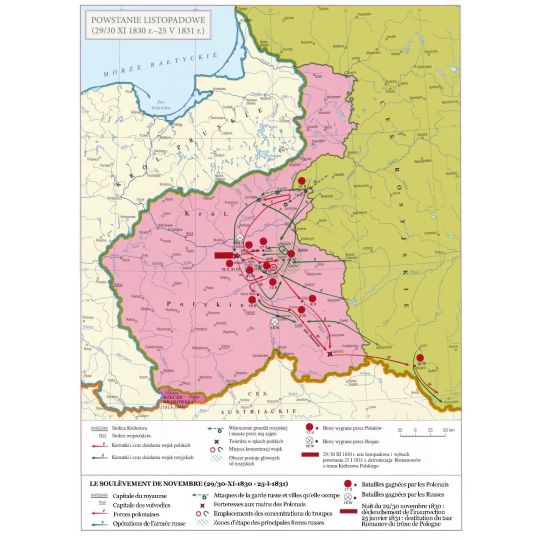
The Polish revolts of the 19th century
🇵🇱 "Wielki atlas historyczny", éd. Demart, Varsovie, 2023
by cartesdhistoire
In 1815, the Congress of Vienna gave Russia the majority of Polish territories called the "Kingdom of the Congress". Krakow, which benefits from the Austro-Russian rivalry, is independent.
In 1830, when the Tsar decides to send Polish troops to fight the revolutionary troubles in France and Belgium, an uprising broke out in Warsaw, and then wins the entire kingdom. The "November uprising" quickly turns into open war, which the insurgents finally lose, who lack foreign support and that of small peasantry.
Then, Patriotic Actions (June 11 & Nov 29) 1860) murderous repressions (February 27th. and April 8, 1861). In October 1862, the head of the civil government announces an uprising of recruits, which primarily affects patriotic activists. This raft marks the beginning of an uprising, generalized but disorganized; evolving into a guerrilla, it is crushed by the Russian army (January). 1863 - June 1864).
The kingdom already lost in 1841, its currency, the złoty, to the benefit of the ruble, then, in 1847, the Napoleon code to the benefit of Russian law and, in 1849, its system of weight and measurements ceased to exist. It is directly incorporated into the Russian empire as the "Vistula Country", a purely geographical name that emphasizes the will to deny its Polish character. Many insurgents are deported to Siberia and their lands confiscated. Russian becomes the official language, all universities are russified, Orthodox Christianity is promoted state religion. The Catholic Church sees its property confiscated, its monasteries closed, its bishops jailed or deported (there hasn't been a single in 1872) and a huge Orthodox Cathedral is built in the heart of Warsaw. A drastic police regime makes any form of cultural activism or armed uprising impossible.
In the Prussia Grand Duchy of Poznan, an uprising took place in the spring of 1848. After his failure, the autonomy, already limited, of the Grand Duchy is abolished.
53 notes
·
View notes
Text

Allegory of Self Control (Temperance)
Artist: Karl von Blaas (Austrian, 1815–1894)
Date: 1859
Medium: Oil on Canvas
Collection: Kunsthistorisches Museum, Vienna, Austria
#allegorical art#karl von blass#austrian painter#european#19th century painting#oil on canvas#woman#clouds#allegory#self control#temperance
11 notes
·
View notes